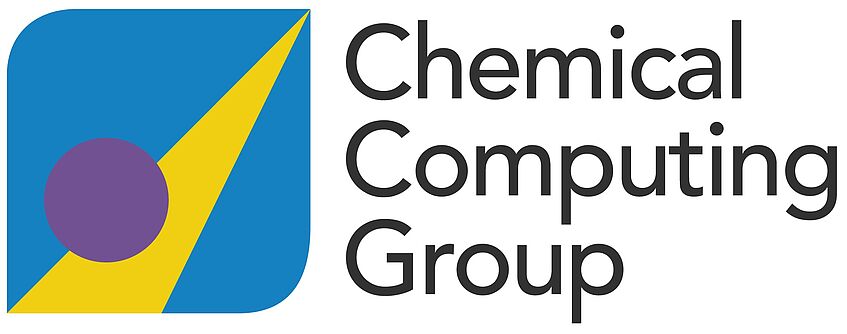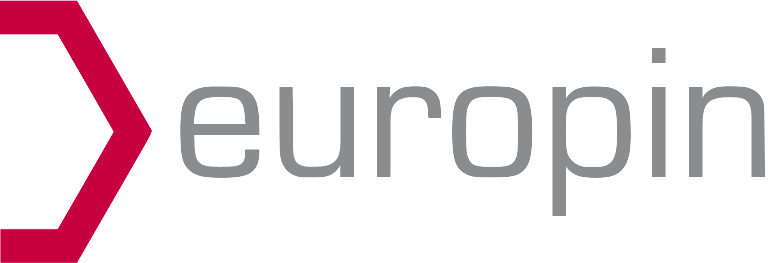EUROPIN Summer School on Drug Design – Vienna
September 14 – 19, 2025
Workshops
Please note: Our website is under construction and will therefore be updated regularly.

BioSolveIT
Workshop 1 (beginner): Interactive, Visual Ligand Design with SeeSAR — A free, hands-on workshop by BioSolveIT
BioSolveIT cordially invites you to a workshop for novices in ligand design. In this "click-along" workshop, you will not only learn about interactive, visually informed ligand design, but you’ll conduct all this yourselves: Assess a protein-ligand complex with respect to “trustability” and generate Medicinal Chemistry SAR hypotheses. Dock and score molecules easily and develop your critical view on what is computed. If time permits, we will embark into the field of fragment-based ligand design (FBLD), using linking/merging, growing, and superfast rescaffolding strategies. As the icing on the cake, we shall briefly touch the idea of navigating extremely big Chemical Spaces (trillions and beyond) — on a laptop. All this shall be accomplished in a very playful manner using BioSolveIT's flagship design suites SeeSAR and infiniSee.
Workshop 2 (advanced): SeeSAR and Road Bumps — When the Poses Get Tough, the Tough Get Posing
In this advanced BioSolveIT workshop, we’ll tackle the harder scenarios: Scenarios such as very closed pockets, metalloproteins, pharmacophore constraints, a nudge to the software to surpass roadblocks. We will use SeeSAR as a visual sparring partner and dedicate some time on the importance of desolvation in binding situation considerations. We shall get a stubborn docking to work, and investigate an example where a halogen’s sigma hole is requiring attention. Once a promising molecule has been retrieved, we will navigate a billion-sized Chemical Space of on-demand molecules to check if there is anything purchasable in the vicinity — and then test our hypotheses in the active site. This workshop requires a basic knowledge of in silico structure-based design; ideally the attendant should have worked with SeeSAR before.
Chemical Computing Group
Computer-Aided Molecular Design
CCG is a leading developer and provider of Molecular Modeling, Simulations and Machine Learning software to Pharmaceutical and Biotechnology companies as well as Academic institutions throughout the world. CCG continuously develops new technologies with its team of mathematicians, scientists and software engineers and through scientific collaborations with customers.
Workshop 1: Structure-Based Drug Design and Ligand Modification
The course covers MOE applications for interactive structure-based drug design. Examples include active site visualization, protein-ligand contact analysis and ligand modification/optimization in the receptor pocket. Use of the docking module and its application to assess ligand flexibility will be discussed. Keywords: molecular surfaces and maps; protein-ligand interactions; protein contact analysis; ligand optimization; docking
Workshop 2: Small Molecule Virtual Screening using MOE
The topics that will be covered are: Virtual screening compound libraries – descriptors, fingerprints and QSPR modeling – pharmacophore modeling – template-based docking – compound design.
Inte:Ligand
LigandScout: Advanced Workflows for Molecular Design and Discovery
LigandScout is the most user-friendly, advanced design platform available for 3D-pharmacophore modeling and virtual screening. It seamlessly integrates our advanced pharmacophore and virtual screening (VS) technologies with molecular docking, dynamics, apo site and activity profiling tools to create an inspiring and productive experience. By providing excellent prediction quality with unprecedented speed, LigandScout successfully addresses challenges in early stage drug discovery.
Workshop 1: Structure- and ligand-based modeling of kinase targets for cancer using LigandScout
Workshop 2: Molecular dynamics simulations analysis and targeting protein-protein interfaces for cancer using LigandScout
KNIME Analytics Platform
Workshop presented by Daniela Digles - Certified KNIME Trainer
The KNIME Analytics Platform is an open source workflow tool that can be used to automatize data analysis tasks. It provides a visual interface which allows the intuitive generation of workflows without programming.
Workshop 1: KNIME basics
Target audience: participants are either new to KNIME or have previous knowledge but are hesitant to change to the modern user interface. The workshop will give a general introduction to the KNIME Analytics Platform and will show how to read, modify, analyze, and visualize data.
Workshop 2: KNIME for drug discovery
Target audience: participants are already familiar with KNIME (e.g., by attending the KNIME basics workshop), but want to learn more about nodes and workflows relevant to drug discovery.
OpenEye
Structure- and ligand-based virtual screening methods are nowadays routinely used as a complementary strategy to experimental high-throughput screening campaigns in the quest for novel lead compounds. The availability of high-performance computing platforms has led to the use of increasingly complex and more accurate methods on extremely large datasets, containing billions of molecules. Here, we will give the participants the opportunity to work with established workflows using Orion®, OpenEye’s cloud-based molecular design platform [1], which integrates software tools, data visualization, collaboration features, and curated data sources.
Workshop 1: From Ideation to Hit Identification: Combine Shape and Color similarity with fragment replacement to identify and explore diverse hit compound sets.
In the first workshop, we focus on the “Hit Identification” phase. We will start with a set of molecular fragments and use the interactive graphical user interface of 2D/3D “Molecule Search” to propose a set of tool compounds in an ultra-fast manner. A selected molecule will be further explored to generate novel ideas by using our fragment replacement and molecular design tool (BROOD). The next step uses exhaustive docking to understand how this proposed ligand series binds to the active site of the target protein. Docking results will be analyzed in an interactive fashion and along the way, we will discuss different approaches which can help us further triage promising hits. This will ultimately facilitate hit selection for lead generation and optimization.
Workshop 2: Affinity Funneling in the Lead Optimization cycle: A protocol for lead optimization to understand the stability of binding poses of protein-ligand complexes, predict their relative binding free energies and then, design new compounds by fragment replacement
In the second workshop, we will focus on “Lead Optimization” phase starting with a small series of active ligands to be exploited. First, we will examine binding poses and the stability of each ligand using molecular dynamics simulations. Then, we will predict Relative Binding Free Energies (RBFE) using the Non-Equilibrium Switching (NES) protocol, which is a highly parallelizable alternative to Free Energy Perturbation methods for predicting affinities towards a given target. Our affinity workflows are allowing the generation of a map of alchemical transformations between different pairs of ligands, prior to running RBFE calculations. We will explore different tactics to create the ligand transformations using various edge maps and examine their influence on the accuracy of predicted results. While waiting for RBFE results, a short introduction on the theoretical background behind the methods used will be given to the participants and if time allows, we will explore more analogs using our fragment replacement and molecular design tool, BROOD. A discussion at the end on the obtained results will conclude the workshop.
Schrödinger
Schrödinger is transforming molecular discovery with its computational platform, which enables the discovery of novel, highly optimized molecules for drug development. Schrödinger’s software platform is built on more than 30 years of R&D investment and is licensed by biotechnology and pharmaceutical and industrial companies, and academic institutions around the world. Schrödinger also leverages the platform to advance a portfolio of collaborative and proprietary programs and is advancing three clinical-stage oncology programs. Founded in 1990, Schrödinger has approximately 900 employees operating from 15 locations globally. To learn more, visit www.schrodinger.com, follow us on LinkedIn and Instagram, or visit our blog, Extrapolations.com.
Workshop 1: A beginners’ guide to system preparation, docking and designing ligands
If you are interested in learning to navigate the Schrödinger suite and how to perform docking of small molecules, join us for a hands-on workshop designed for beginners. The main Maestro interface houses all the tools that are required to bring in your starting small molecules and protein system, so that they may be prepared correctly. Once you are comfortable with the fundamentals of preparing your raw materials, we will move on to understanding more about the binding site and its features, which will help us think about how a ligand might interact with it. This forms a fundamental basis for understanding our docking results, so we will start by setting up and running docking jobs and analyzing how the resulting docked compounds fulfill the basic criteria of shape and molecular interactions that lead to the final scoring term. Finally, we will explore ligand design in a more automated fashion using the Ligand Designer GUI which facilitates on-the-fly ideation through ‘build and dock’ workflows. Using embedded libraries of building-blocks, users can modify their initial idea in many intuitive ways: from attachment points on the bound ligand; the free and viable space in the binding site; through picking specific residues in the protein or specific waters in the binding cavity to guide the design process.
Workshop 2: Efficient virtual screening: Combining ligand-based screening with QuickShape and advanced water-based scoring with WaterMap and GlideWS
In this workshop, we will assemble a modern virtual screening pipeline from start to finish. We will curate a tailored screening library by simultaneously querying catalogs of many vendors. Using QuickShape screening, we will efficiently prioritize compounds for molecular docking, reducing computational cost and focusing on promising candidates. Then, we will perform compound selection leveraging chemical properties, pharmacophore features, and diversity analysis with the Hit Analyzer tool in Maestro to identify a diverse set of potential hits. Using GlideWS, we will rescore these compounds and use the advanced visualizer in Maestro to eliminate likely false positives by analyzing protein desolvation, improving the accuracy of your screening results. Finally, we will nominate a selection of top-ranking compounds for sophisticated AB-FEP+ rescoring
Contact us
If you have any questions regarding the EUROPIN Summer School on Drug Design, please don’t hesitate to contact us.
Please do not contact anyone other than our main contact address! Mails sent to this address will be forwarded to the organising committee as a whole!
Please find more information on EUROPIN here.
Organised by
Pharmacoinformatics Research Group
Following a holistic pharmacoinformatic approach we combine structural modeling of proteins, structure-based drug design, chemometric and in silico chemogenomic methods, statistical modeling and machine learning approaches to develop predictive computational systems for transporters and ion channels.
The validation and optimisation of the obtained in silico models by strong links to experimental groups is an integral part of these activities.
Follow us on LinkedIn








